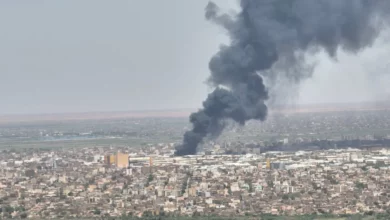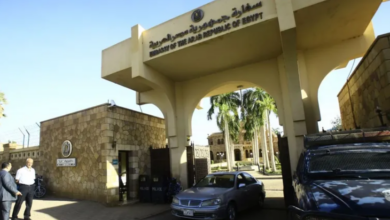
Sudan will develop a roadmap to eliminate Egypt's presence in the Halayeb triangle area, the Paris-based Sudan Tribune website reported on Monday.
The Sudanese foreign ministry has instructed the concerned bodies to devise this roadmap, the Sudan Tribune reported the head of Sudan’s Technical Committee for Border Demarcation (TCBD), Abdallah al-Sadiq, as saying.
According to Sadiq, officials from the foreign, justice and interior ministries, the National Records Office and the TCBD have met in order to modify files prepared by previous committees on Halayeb.
On Sunday, Sadiq told the semi-official Sudan Media Center (SMC) that a committee, which includes all the concerned bodies, has been formed to decide on Halayeb triangle issue.
“The committee held a preparatory meeting to develop guidelines and a road map to explore ways to evict the Egyptians from the area [Halayeb] through diplomacy,” he said.
Sadiq stressed that Khartoum has documentation which clearly proves that Halayeb is a Sudanese territory.
In October, Sudan once again lodged a complaint to the United Nation Security Council over the disputed area of the Halayeb triangle with Egypt.
Last April, Cairo refused a demand by the Sudanese government to hold direct talks on Halayeb and Shalateen, or to accept the referral of the dispute to the International Court of Arbitration.
International law stipulates that the two parties must agree to arbitrate a dispute by the tribunal.
In Cairo, members of Parliament responded harshly and condemned Sadiq's comments.
MP Hatem Bashat said the remarks are irresponsible, adding that Sudan is bullying Egypt with possible influence from Qatar and Saudi Arabia, as officials from the two countries visited Khartoum recently — a sign that Sudan may make bold decisions.
MP Tariq al-Khouli said the issue was raised after the visit of Sheikha Moza bint Nasser to Sudan, explaining that she may be behind the move due to the Qatari regime's hatred of Egypt.
Halayeb and Shalateen, also known as Halayeb triangle, is a border area that has been an issue of contention since the late 19th century.
In 1899, when Britain occupied Egypt and Sudan, the Anglo-Egyptian Condominium Agreement for Sudan set the political boundary between the territories at the 22nd parallel, placing the Halayeb triangle inside Egyptian borders.
In 1902, the British drew a separate "administrative boundary" that placed the Halayeb triangle under Sudanese administration because its inhabitants were closer to Khartoum than Cairo.
The Halayeb triangle, which includes the three main towns of Halayeb, Abu Ramad and Shalatin, stretches over 21,000 square kilometers.
The area remained under Egyptian-Sudanese joint control until the dispute resurfaced in 1992, when Sudan allowed a Canadian oil company to search for petrol in the waters off Halayeb. Negotiations began, but the company pulled out of the deal until sovereignty was settled.
Every now and then Sudanese President Omar al-Bashir makes a statement that Halayeb triangle is sovereign Sudanese land. Earlier this month, Bashir threatened to resort to the United Nations Security Council if Egypt refuses to negotiate over the Halayeb triangle.




